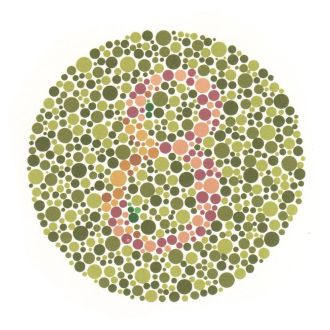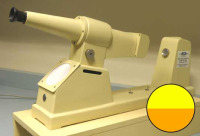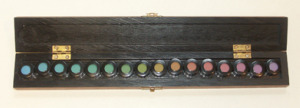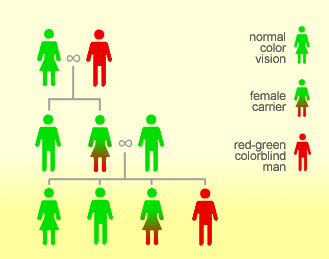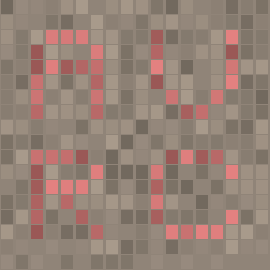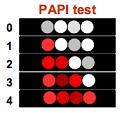If you first learn about your or one of your kids color vision deficiency there is one thing which comes to your mind often just after you learned what it really means to you: Is there a cure for color blindness?
The short answer to this questions is simply: No. And the long answer: There is no cure for color blindness—yet. There are some scientific studies going on which had just recently quite a big breakthrough. This and some other interesting ideas about aids for colorblind people are the topic of this article of the Color Blind Essentials series.
First ideas
– American Committee on Optics & Visual Physiology
As with many other handicaps or diseases when some people learned that some others can’t really distinguish colors like themselves, laziness was the first thing which came to their mind. Because of that many colorblind people just started to learn color names more intensively—without any success.
There were also some other techniques like warming one eye, electrical stimulation, injections of iodine or extracts of cobra venom, vitamins or flashing light. All this finally resulted in an official statement of different Academies and Medical Associations that no method had been found for the correction of color blindness, whether called ‘color weakness’, ‘color confusion’ or ‘color defectiveness’—which is still true as of today.
But there were also some good ideas around like color filters or spectacles with horizontally divided red and green sections.
Aids for colorblind people
If you have a closer look at the available tools for color deficient people, you have on one side the computer and all its possibilities and on the other side non-computer based aids.
On the non-computer side there is actually just one technique used: colored filters. These filters come in different forms:
- Lenses: Manufacturers of tinted lenses claim that their product can improve color vision for colorblind users. And people often read this as if they could almost cure your color blindness—which is wrong. Here are some facts about tinted lenses:
- They have to be worn in only one eye, as otherwise fewer colors are seen.
- It needs some time to get used to them and learn some new colors.
- They can help you and enhance your color perception in certain situations.
- You want be able to see more colors, but maybe other ones then you are used to.
- Certain colors seem to vibrate or shimmer because of the usage in only one eye.
- Worn while you are driving they can be a safety risk because of the worse perception at dim light situations.
- Glasses: It is almost the same for colored glasses as for lenses. The first products looked a bit strange as only one glass is tinted. Recent products have some coating which reduces this effect and makes glasses a true alternative for the lenses.
- Tools: There is a little tool called Seekey which is made of two tinted filters, one in green and the other in red. If you look through the filters on and off you can definitely distinguish more colors as a colorblind. This can be an advantage for some specific tasks in certain professions or in some everyday life situations. Such filters can also enhance certain diagnostic or medical instruments and help the colorblind operators to see what they otherwise wouldn’t spot that easy.
Many colored filters can help you to pass some color blindness tests, specially the famous Ishihara plates test. But this is not the correct purpose as those tests are usually there to assure, that your color vision isn’t a safety issue. Because of that in most cases tinted filters are not allowed to be used on such qualifying tests.
If we have a look at the computer based helpers for colorblind users, there are different tools available. Those tools make use of different techniques which can only be done digitally.
- Show the name of a color if you point to it.
- Shift the whole color spectrum around the color wheel.
- Highlight certain specific colors in a different color.
- Use a pattern to highlight certain tints.
- Some sophisticated algorithms which try to manipulate a picture to the effect that colorblind people perceive it still as normal but that certain shades can be distinguished better.
Such tools might really help you in some specific situations. But often they are not that easy to adapt for your personal purposes and sometimes just to cumbersome to handle. And don’t forget that all those tools can only be used while working on a computer, which is in everyday life often not such a big handicap for colorblind people.
Cure of color vision deficiency
As mentioned in the lead of this article there is to this day no cure for colorblind people available—but it looks like as if there is one for colorblind monkeys!
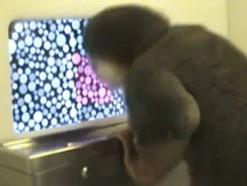
Jay Neitz, a well known vision scientist, and his team developed a gene therapy to enhance color vision. Colorblind monkeys were used as test animals. They received the gene injections directly into their eyes to build up the missing color receptor.
The monkeys had to perform a color blindness test and if they did well they received a reward. After a while they started to perform much better on a task they couldn’t accomplish before because of their vision handicap.
Due to this test result many colorblind people hope to be able to get rid of their color vision deficiency in the near future. Unfortunately this won’t come true that fast. And there are some difficulties which have to be overcome until this dream could get true:
- Gene therapy for red-green color blindness may not work for humans as well as it does for monkeys.
- Side effects of subretinal injections can include irritation or infection, in addition to the risks of permanent retinal detachment and blindness at the injection site.
- There could be adverse psychological effects associated with suddenly being able to see new colors and learning how to categorize them.
Also other institutions started to pick up this topic and are looking into the development of such a gene therapy to heal congenital color vision deficiency.
There is a possibility that a color vision handicap can disappear again. In some cases of acquired color blindness, specially for vision deficiencies which can occur after a hard hit on your head, it is reported that this handicap can disappear again after a certain time. Unfortunately this can’t be influenced and the process of healing can’t be used for all other colorblind people.
This was the last part of the Color Blind Essentials series. If you would like to learn more details about color vision deficiency why don’t you browse my articles archive, try some of the color blindness tests or check out my tools including a color blindness simulator.





